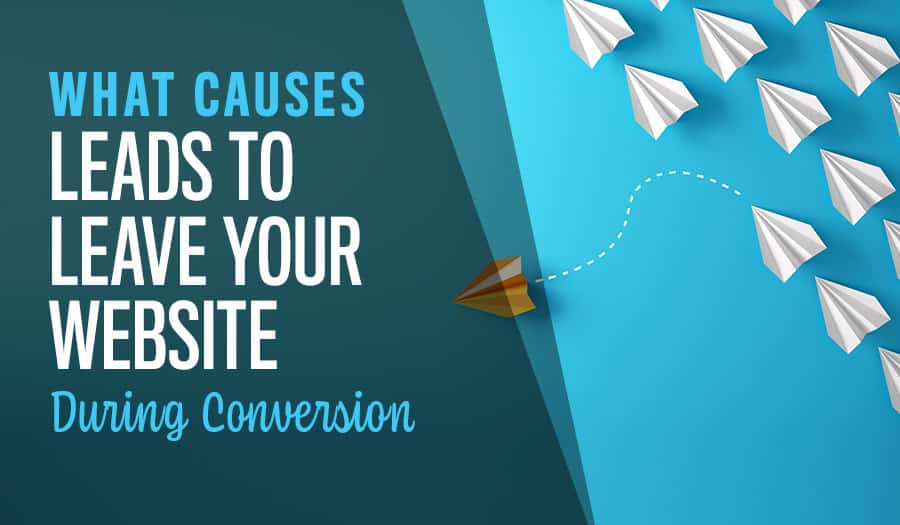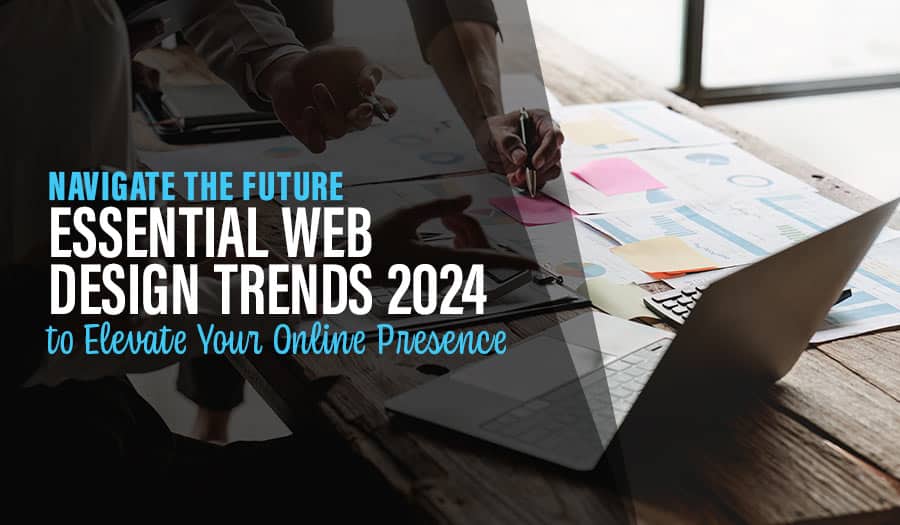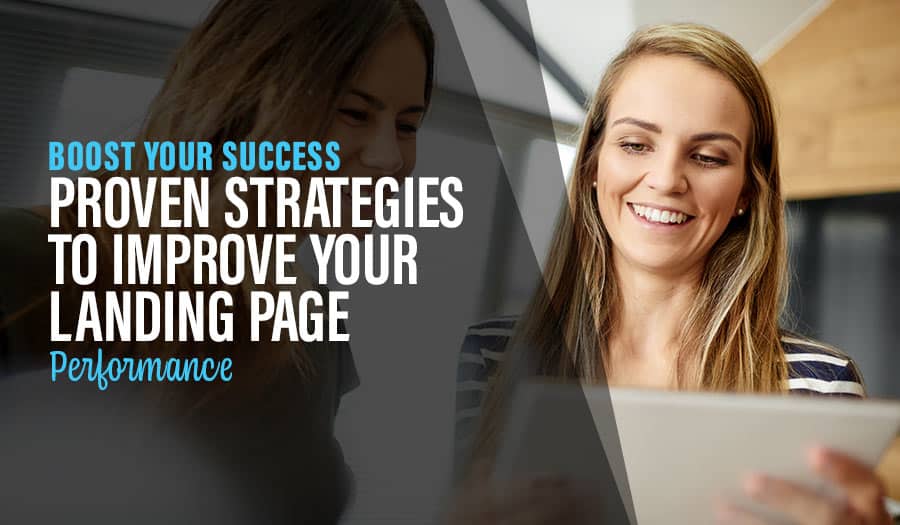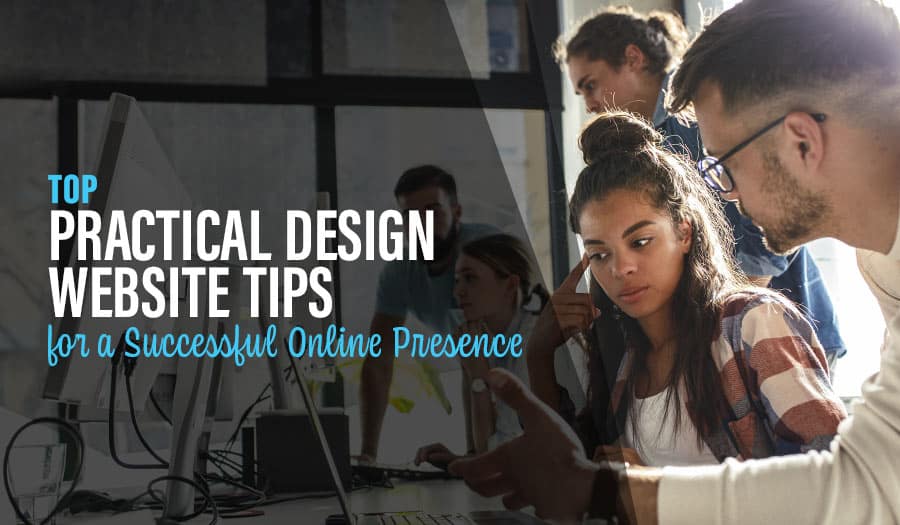Conversion interruption is something we have all experienced first-hand. We can coast through an online shopping experience or investigate a service when something about a site convinces us not to continue. Maybe it’s an aggressive lead-qualifier, maybe it’s a paywall. Maybe it’s a 404 page in place of something we really wanted to see. Whatever the cause, certain things trigger the “Nope Factor” in all of us. Let’s explore website conversion issues and the causes that lead to leaving your website.
The Nope Factor is what causes leads to get up and leave during an otherwise successful conversion. A lead is filling their cart or choosing their service package when something about the site completely turns them away. This is different from distraction or being pulled away because that single “Nope” response leaves them with a mental reminder not to come back. They remember a general impression of not enjoying the experience and not wanting to repeat it, even if the offending web-design asset was only a small part of an overall great website.
Website Conversion Issues: What Causes Leads to Leave Your Website?
- Page Load Speed
- Aggressive Lead Qualification
- Aggressive Ads
- Spacing Issues
- Technical Problems
So what, exactly, triggers these leads to experience the “nope” and leave in the middle of a conversion? That’s exactly what we’re here to explore today to prevent future noping-out.
1. Page Load Speed
You know that Google values page load speed highly, but Google’s crawlers don’t see everything that users see. It doesn’t matter if your page opens if the wrong elements load first or in a disrupting manner.
-
Page Won’t Load
- Remember that not everyone has great internet speed, and many people connect on their phones. Be sure your page isn’t too heavy to load for slow-internet users. If the page doesn’t load, they’ll go somewhere else with cleaner pages that resolve reliably.
- Solution: Focus on clean, fast-loading design to stay competitive. If your page loads first in 3 tabs of alternatives, you’ll be the website users choose.
-
Ads Load Before Content
- When someone is patiently waiting for your page to load, the last thing they want to see is a page packed with ads while your central content remains blank and loading.
- Solution: Be sure to prioritise the page load resources given to your ads so that content loads first and ads load second.
-
Content Jumps as Photos Load
- So much work has gone into creating short mobile-friendly paragraphs of text that are easily skim-able. But all that skimming-ease is lost when the paragraphs jump huge lengths up or down as the images load.
- Solution: Make placeholder frames paired with ‘jump-down’ arrows, so images take up the same amount of space even when they have not loaded yet. The arrows can live behind the images (on the frame) for easy skip-down if users don’t want to wait. This prevents the paragraphs from jumping up or down as the page loads.
2. Aggressive Lead Qualification
It takes time to convert a lead through inbound marketing. If someone has arrived on your blog for the first time, they are not yet ready to join your newsletter or make an account. The more aggressive your lead qualification pop-ups are, the more likely they are to cause a quick “nope” as users experience a sudden aversion to giving their email address up front without even enjoying some content first.
-
Convert Right Now
- Asking leads to convert immediately after entering the site is an excellent way to scare them away to somewhere less aggressive. We know you want their data, but they know that at that moment, you’re essentially asking “something for nothing” because they haven’t had a chance to gain value from your site yet. It feels pushy, possibly scammy, and leads will turn away quickly when they might have otherwise qualified a little later.
- Solution: Wait until the lead has scrolled down through the article or even opened additional pages on your site before directly asking for qualification. You can also leave a qualification form open along a sidebar at all times.
-
Inescapable
- Just about the fastest way to get your website closed out is to make a pop-up inescapable. If users have to click a response button to continue, they’d usually instead leave than be forced.
- Solution: Provide an ‘x’ button for all pop-ups. Even better, let them ‘click out’ by closing pop-ups if space outside of the pop-up is clicked.
-
Insulting the Non-Leads
- You’ve seen these lead qualifiers out there. They include questions like “Join our Newsletter to learn the secrets of the universe” with two options: “Yes! Teach me the secrets!” and “No thanks, I like being ignorant”. No one likes to be insulted if they choose not to join immediately. Many people will be offended even if they weren’t going to convert. It’s not as funny as these brands think they are being.
- Solution: Be funny, but don’t be insulting. Use alternates, or even a little survey like “No thanks, I’m not into Newsletters.” or “Not until you prove your secret mastery first.”
-
Paywalls
- “Oof!”. That is the mental sound of someone eagerly interested in your content when they hit a paywall. Then they brush themselves off and leave the site. If getting an email address for your gated content is challenging, paywalls are worse. Only ask for money if you’re sure you’ve already converted a customer. Surprise costs are the definition of a “nope” situation.
- Solution: Offer your paid content as a product, even discounted samples. But don’t offer it as lead-qualifying content only to then ask for money. Never surprise leads or customers with a request for a credit card number.
3. Aggressive Ads
Ads are revenue, and your leads and customers understand that. Few people are offended by quiet banner ads and even the occasional animated or video ad. But aggressive advertisement strategies can discourage leads who are trying to enjoy your content – but can’t.
-
Intrusive Video or Sound
- Most people surf the web with their sound off, or assume the web is a generally silent place. Sudden music or videos with sound can get people in trouble at work, school, or other quiet places. Avoid this MySpace-era mistake. Similarly, visually intrusive and silent videos can cause someone to quickly close a page.
- Solution: Make a white-space area for videos on any page they appear. And always make videos pause-able and closable. Never play sound without a user actively un-muting first.
-
Ads that Block Content
- Ads may be necessary, but they kill the web traffic they exploit when ads actively block your content. They’ll leave if a lead can’t read their article or check out your products without obstruction.
- Solution: space-test every ad on every website page, considering every possible sized screen. Be sure your ad-space is equally dynamic when your site changes size and shape to accommodate window size.
4. Spacing Issues
Speaking of page-blocking ads, any kind of page-blocking is a serious deterrent for your leads and customers. This is worse when your features and assets block key elements of the page or even just overlap badly. It shows a lack of care in web design that users worry will reflect a lack of care in product quality or customer service.
-
Content-Blocking Floating Assets
- Floating web assets are great. Your lead qualification form, chat bubble, and social media share bar can all be great floating assets. But only if there is enough whitespace for them in each page design. If leads can’t see the first three words of any paragraph or have to read ‘around’ a blocking floating asset, they will bounce.
- Solution: Always space-test floating assets on every page and device size before pushing an update that includes floating assets.
-
Page-Filling Drop-Down Menus
- We’ve all seen this one at least once. A company with many products or services and a manual drop-down menu from the top navigation bar. The only problem? The drop-down is so big that it fills the page and possibly beyond. There’s no way users can surf that menu, and it looks sloppily designed to boot. It can actually hinder navigation, and when leads can’t navigate, they’ll leave instead.
- Solution: Build a scroll bar into a shortened drop-down for one. After this, consider reducing your first-level menu options into cleaner and more navigable categories.
-
Aggressive Visual Clutter
-
- Keep your design clean if your pages contain busy ads or are just very dynamic with on-site content. Too much visual clutter will cause leads to be unable to focus. It can actually generate stress, which will cause lead to associating stress with your site, which will eventually send them away before a purchase is complete.
- Solution: Create page templates that have a clean and fresh design. Keep both ads and internal content in tidy ‘trays’ with plenty of white space and room for modules to rearrange for various screen sizes.
-
-
Text Walls
-
-
- Then there are walls of text. Whether users are on PCs or mobile devices, no one likes to read an endless paragraph that never breaks. It causes the eyes to cross, and the mind to lose its place. Ultimately, it’s not worth the effort. After losing their place two or three times, most leads will go somewhere easier to read without a second thought.
- Solution: Break up your text. Shorten sentences. Break paragraphs every three to five sentences. And break up your text with bullet points, images, and helpful infographics.
-
-
5. Technical Problems
If your site doesn’t work correctly, leads will assume there are other underlying problems with your brand as well. Not to mention simply being frustrated at not being able to find what they came looking for.
-
-
Navigation Menu Won’t Open
- Your navigation menus are critical for leadership development, especially for those surfing on mobile. If the “hamburger menu” doesn’t open when tapped or clicked, or any sub-menus don’t open, leads can’t get around. And if they can’t get around, they’ll leave empty-handed.
- Solution: Test your website and app regularly to ensure all menu options work exactly as they should.
-
Internally Linked 404 Page
- 404 pages are what happens when a URL points to a non-existent page in your domain. No matter how customised your 404 page may be, it’s bad news if your internal links are so broken that they lead to 404s. When a lead hits a 404, they’re more likely to leave than to turn around.
- Solution: Run a link-checker through your site regularly to ensure no broken links are pointed internally or externally. Then fix any that do turn up broken. Links break from time to time.
-
Leads come to your website hoping to see your very best. They want to see polished pages and persuasive pitches. They want helpful blogs and clean-looking pages. These things are easy to deliver if your design team knows what to aim for. But many of the “nope” causes we’ve talked about today are also very easy to slip into if a brand isn’t careful.
Experiencing Website Conversion Issues?
Contact us today for more superb insights into perfecting your website for lead qualification and conversion.
Let Sydney’s leading Web Design Agency take your business to the next level with a Pixel Fish Small Business Website.
Check out some of our latest Website Design projects.
Further Reading:
10 Tips for Creating a Better Contact Form to Improve Conversion
Top 7 Tips for On Page SEO Optimisation
3 Reasons Mobile Responsive Design is Crucial for Your Online Success
Digital Marketing Trends to Watch
Small Business SEO: Why Your Business Needs Google Analytics
Top 10 Things To Consider When Choosing An Ecommerce Web Designer
10 Best Practices for a Successful WordPress Website Design Project



